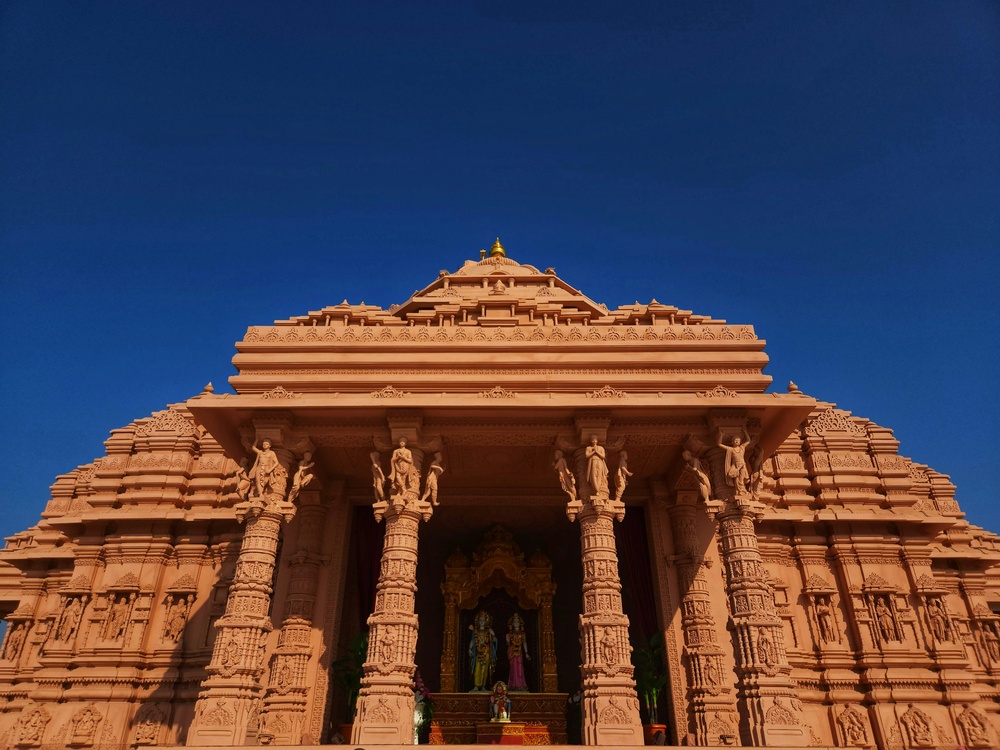Ayodhya Tourist Places: A Complete Guide to the Land of Lord Ram
Ayodhya, located on the banks of River Sarayu in Uttar Pradesh, is one of India’s most revered spiritual destinations. Known as the birthplace of Lord Rama, Ayodhya holds immense religious, historical, and cultural importance. It is a city where every street and temple narrates tales from the Ramayana, making it a must-visit for devotees and travellers seeking spiritual enlightenment. Here is a complete guide to the most significant Ayodhya tourist places to help you plan your pilgrimage to the Land of Lord Ram.
1. Ram Janmabhoomi
At the heart of Ayodhya lies Ram Janmabhoomi, the sacred site believed to be the birthplace of Lord Rama. The grand Ram Mandir is under construction here, and thousands of devotees visit daily to offer prayers and witness the divine aura of this powerful spiritual centre. The temple complex is set to become one of the largest in India, drawing pilgrims from across the globe.
2. Hanuman Garhi
One of the most famous Ayodhya tourist places, Hanuman Garhi is a temple dedicated to Lord Hanuman, located atop a hill with 76 steps leading up to it. Legend says Lord Hanuman resided here to protect Ayodhya. Devotees believe that visiting Hanuman Garhi before Ram Janmabhoomi ensures the fulfilment of wishes. The temple offers breathtaking views of Ayodhya and is always bustling with chanting and prayers.
3. Kanak Bhawan
Situated near Hanuman Garhi, Kanak Bhawan is a magnificent temple built by Queen Kaikeyi for Sita after her marriage to Lord Rama. It houses beautifully adorned idols of Lord Rama and Goddess Sita with gold ornaments, giving the temple its name, meaning ‘Golden Palace’. Its colourful architecture and peaceful ambience make it one of the most visited Ayodhya tourist places.
4. Nageshwarnath Temple
This ancient temple is dedicated to Lord Shiva and holds a prominent place among Ayodhya tourist places. Legend states that Kush, son of Lord Rama, built it for the Naga princess he married. The temple is especially popular during Shivratri, when devotees gather in large numbers to offer prayers and participate in the rituals.
5. Treta Ke Thakur
Treta Ke Thakur is another significant temple in Ayodhya where Lord Rama is believed to have performed the Ashwamedha Yagna. The temple houses black stone idols of Lord Rama, Sita, Lakshman, Bharat, Shatrughna, and Hanuman, believed to date back to the 1700s. It remains open only on Ekadashi, making it an important place for devotees during this auspicious time.
6. Sita Ki Rasoi
Sita Ki Rasoi, located near Ram Janmabhoomi, is an ancient kitchen believed to have been used by Goddess Sita. It displays traditional kitchenware and symbolic utensils, reflecting the domestic traditions of ancient times. Women especially visit this place to seek blessings for peace and prosperity in their households.
7. Guptar Ghat
Guptar Ghat, located on the banks of River Sarayu, is where Lord Rama is believed to have taken Jal Samadhi to depart from his earthly life. It is one of the most peaceful Ayodhya tourist places, with beautifully built ghats where devotees take holy dips. The early morning aarti and evening rituals make it a spiritually uplifting experience.
8. Tulsi Smarak Bhawan
Tulsi Smarak Bhawan is dedicated to Goswami Tulsidas, the saint poet who wrote the Ramcharitmanas. This cultural complex houses a library, research centre, and museum displaying manuscripts and artefacts related to Tulsidas and Ramayana. Daily Ramleela performances held here keep the traditions of Ayodhya alive for tourists and scholars.
9. Ramkatha Park
Ramkatha Park is a modern addition to Ayodhya tourist places, built to host religious discourses, devotional music, and Ramayana performances. It has open-air theatres and well-maintained gardens. During festivals like Ram Navami, the park hosts grand events that attract devotees and tourists from all over the country.
10. Mani Parbat and Sugriv Parbat
These two hillocks are associated with Ramayana legends. It is believed that when Lord Hanuman was carrying the Sanjeevani mountain, a part of it fell here, forming these mounds. The hillocks have small temples and offer panoramic views of Ayodhya, making them peaceful spots for meditation and reflection.
Best Time to Visit Ayodhya
The ideal time to explore these Ayodhya tourist places is between October and March when the weather is pleasant. Visiting during Ram Navami, Diwali, or Vivaha Panchami allows you to witness grand processions, temple rituals, and cultural performances that bring the legends of Lord Rama to life.
How to Reach Ayodhya
- By Air: The nearest operational airport is in Lucknow (about 135 km away), while Ayodhya Airport is under construction and will soon open for commercial flights.
- By Train: Ayodhya railway station is well connected to major cities like Lucknow, Varanasi, and Delhi.
- By Road: Regular buses and taxis are available from Lucknow, Faizabad, and other nearby cities.
Final Thoughts
Ayodhya is not merely a city but a timeless spiritual destination where mythology, faith, and culture merge seamlessly. Each of these Ayodhya tourist places offers a unique experience, whether it is the spiritual aura of Ram Janmabhoomi, the historical significance of Treta Ke Thakur, or the serene beauty of Guptar Ghat. A visit to Ayodhya will not only strengthen your devotion to Lord Rama but also leave you with a deep sense of peace and spiritual fulfilment.


Leave a Reply
Want to join the discussion?Feel free to contribute!